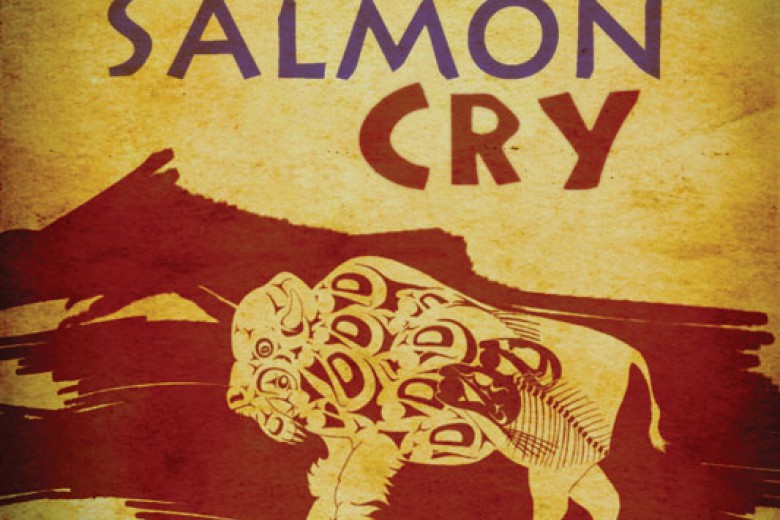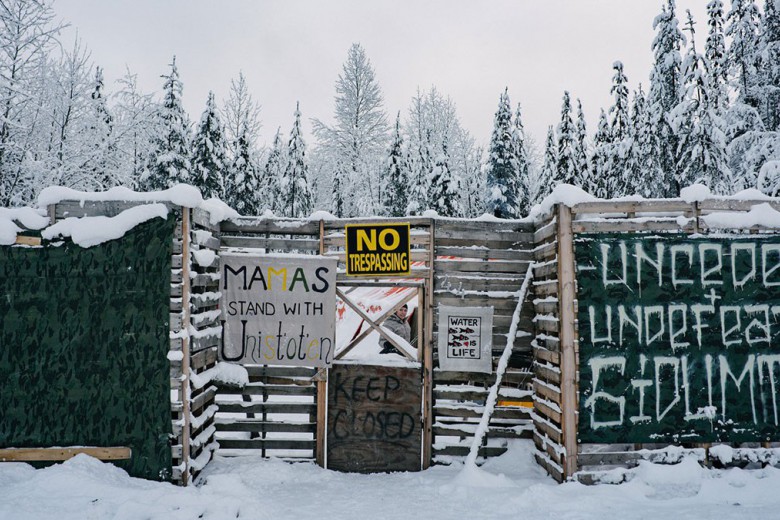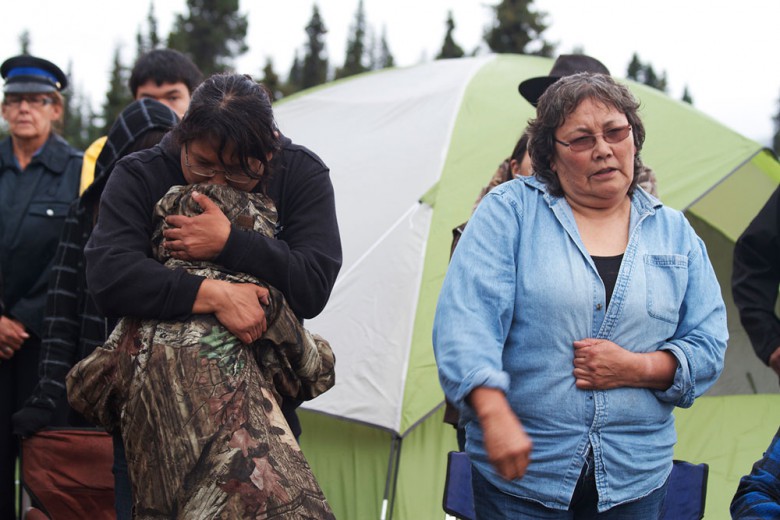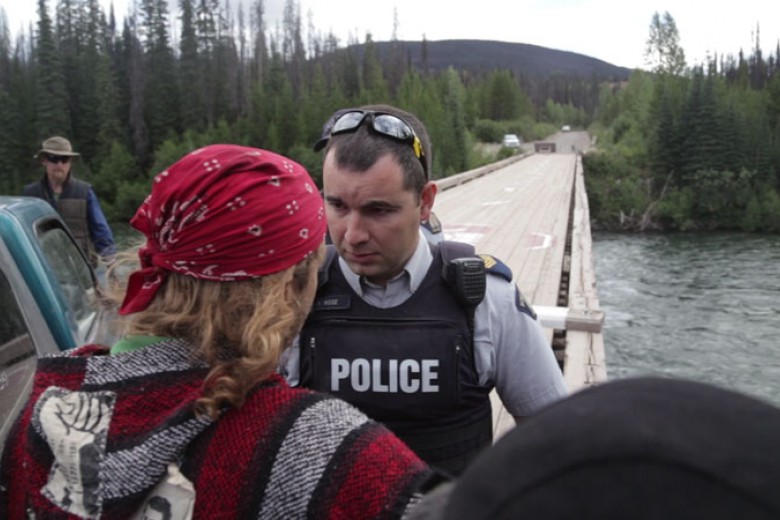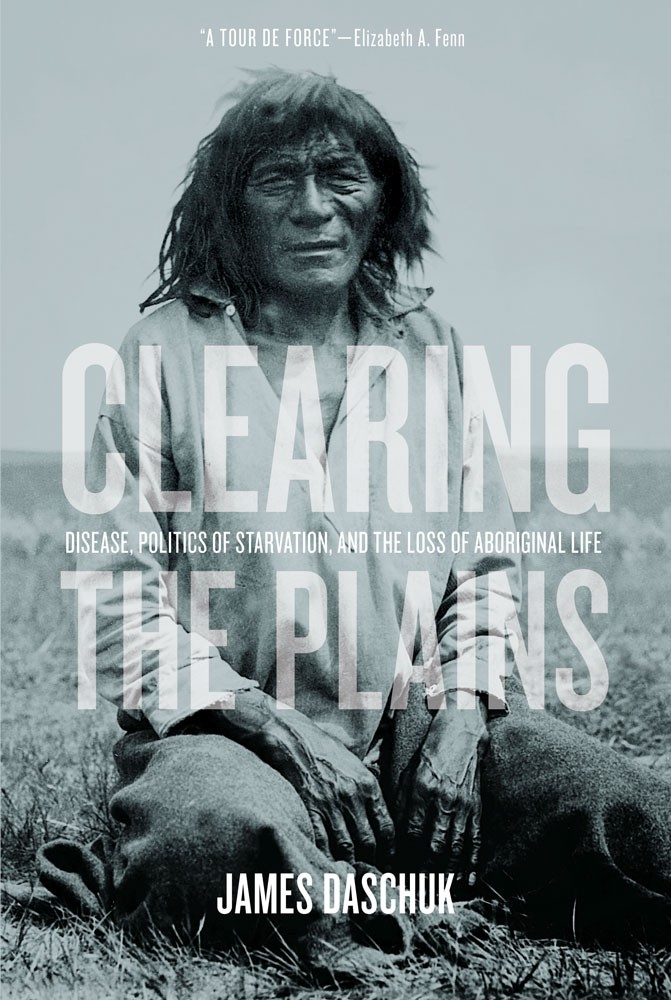
By James Daschuk
University of Regina Press, 2013
In the context of a Canadian popular imagination still permeated by myths about heroic voyageurs, intrepid Mounties, and an inexorable yet ostensibly “peaceful” and “lawful” acquisition of other peoples’ lands, James Daschuk’s Clearing the Plains is a vital intervention. Described by historian Elizabeth A. Fenn as a “tour de force that dismantles and destroys the view that Canada has a special claim to to humanity in its treatment of Indigenous peoples,” Daschuk’s study of Indigenous health and disease on the Canadian Prairies draws on decades of research to recount Canada’s policies of forced starvation and ethnic cleansing. More broadly, it’s a good introduction to the history of Canadian expansion into the northwest and the nature and evolution of Canadian Indian policy in the 19th century.
Research for Clearing the Plains began some 20 years ago as part of Daschuk’s doctoral program in history at the University of Manitoba under the supervision of D.N. Sprague. Sprague was himself a scholar of Canadian and Métis history, perhaps best known for his lengthy feud with Tom Flanagan over interpretations about Louis Riel, presumptions of government “benevolence,” and the causes of Métis dispossession in the Red River valley. Like Sprague’s own work, Canada and the Métis (1988), Clearing the Plains finds little evidence of Dominion “benevolence” in its annexation of the Canadian northwest or in its post-Confederation dealings with First Nations.
However, Daschuk’s is also a work of environmental and epidemiological history. As such, he argues that human agency, greed, and colonial power are “only half of the story.” In his view, the field of biology is equally important to understanding Indigenous history, not just in present-day Canada but also throughout the hemisphere. Much of what follows is an attempt to strike a balance between these two sides of causation, with Daschuk see-sawing between a portrait of epidemic disease as an inexorable, objective, even organic force, and a counter-portrait that emphasizes the social determinants and policy-induced nature of compromised immunity, disease outbreaks, and death.
The historical scope of Clearing the Plains is sweeping. The book opens with an assessment of pre-European health and well-being on the northern Great Plains, then concentrates on the impact of the fur trade era and nascent European settlement, and ends with the post-Confederation treaty era and the “nadir of indigenous health” in the wake of the Northwest Resistance of 1885. Throughout the book, Daschuk emphasizes the relationships between Indigenous health, outbreaks of epidemic diseases, and environmental factors, as well as settlement expansion, settler ideology, and most crucially, Indian policy. In this regard, Clearing the Plains joins a growing body of historical work examining the social determinants of health and, in particular, the relationship between Indigenous health and Canadian policy.
Overall, Daschuk’s book is important less for unearthing new and surprising historical facts than for expanding upon, reinterpreting, and publicizing them. For example, one of the central theses of Clearing the Plains is that famine was a deliberate policy weapon used to coerce “unco-operative Indians” onto reserves and remove them from lands coveted by white settlers. This isn’t a revelation for anyone familiar with existing scholarship. In his influential 1983 article, “Canada’s Subjugation of the Plains Cree,” John Tobias persuasively demonstrated that starvation was a weapon used to impose the reservation system, bring “recalcitrant” leaders such as Big Bear to heel, and force the Cree to capitulate to treaty terms. Clearing the Plains not only expands on such themes, bringing to light further evidence and examples, but its publication has made them accessible to a much wider public.
Daschuk’s interpretive framework sheds the congratulatory and smug self-image that still dominates in much Canadian historical writing. He is unafraid, for example, to label the settler-colonial process in southern Saskatchewan “ethnic cleansing,” and elsewhere he has described the foundation of modern Canada as resting upon the twin truths of “ethnic cleansing and genocide.” Those wanting a crash course in Prairie colonial history would do well to read Daschuk’s book alongside Sarah Carter’s Aboriginal People and Colonizers of Western Canada to 1900 (University of Toronto Press, 1999). Both books are carefully empirical but rooted in a deep commitment to social justice. Together, they serve as excellent points of departure for further research into colonial policy in the Canadian Prairie provinces.


